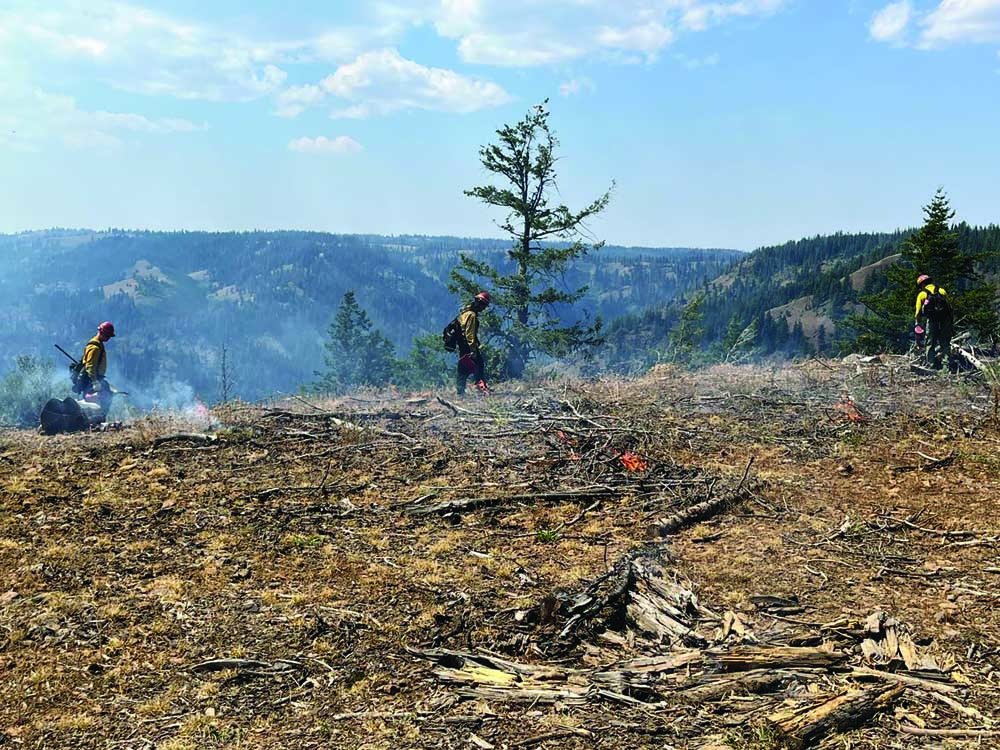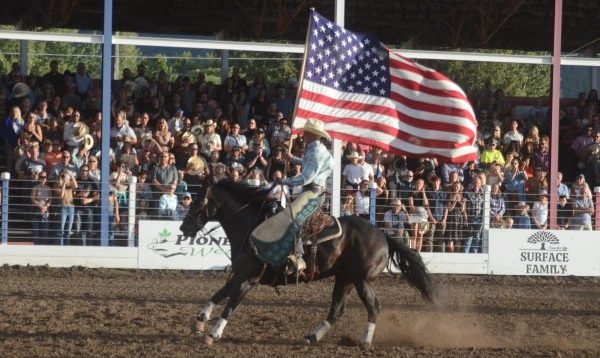Cougar Creek officials offer upbeat update
Published 9:48 am Friday, August 9, 2024

- An engine crew assists with the firing operations Wednesday, Aug. 7, 2024, using drip torches to hand light in efforts to control the Cougar Creek Fire in Southeastern Washington.
TROY — Firefighters on the Cougar Creek Fire continue to focus on preventing the fire from moving west into the Wenaha-Tucannon Wilderness, and so far, their work is paying off.
That was one of the messages fire officials delivered Thursday, Aug. 8 during an online community meeting about the 21,477-acre fire burning just north of the Washington state line.
Trending
The fire is burning southwest of Clarkston, Washington, 1 mile west of the intersection of Highway 129 and the Grande Ronde River Road. The cause remains under investigation. The fire is 35% contained.
Since the fire was first reported on July 15, Grande Ronde Road from Troy to the Highway 129 junction in Washington has been closed.
A Level 2 (“Be Set”) evacuation remains in effect in Wallowa County for all of Grouse Flat from Bear Creek Road north to the state boundary and the Garfield County, Washington, line south to the Grande Ronde River.
During Thursday’s online meeting, Kurt Ranta, an operations section chief on the fire, outlined efforts to keep the fire out of the wilderness area, including a firing operation near Saddle Butte. Crews Thursday night continued the burnout operation along Forest Service Road 40 to extend a blackened fire line northward from Saddle Butte, reaching Saddle Springs.
A stretch of cooler weather gave unexpected help to that effort, Ranta said.
The southern part of the fire, he said, “has been cold and out for a long time. … We’ve had no movement in there since our team has been here, for over a week.”
Trending
Fire equipment, remaining hoses, and litter is being collected and removed from control lines, roads, and staging areas across the swath of fire perimeter north of Grouse Flat and along Grande Ronde Road, according to an update Friday morning.
Further north, firefighters completed a firing operation at the intersection of Forest Service roads 40 and 43. Mop-up work is nearly finished on an existing spot fire south of DeSpain Spring, the update reported. Firefighters are also continuing to masticate and chip remaining activity fuels along the eastern and northeastern fire flanks.
Nick Bacon, the emergency management director for Asotin County, told meeting attendees that evacuation levels have stayed static since the first full day of the fire. He said he was in regular contact with sheriffs in Asotin and Wallowa counties and urged people to sign up for emergency alerts. (Click here for information about how to sign up for those alerts.)
Bob Tobin, the meteorologist on the fire, said weather conditions on the fire had returned to warmer and drier conditions and warned of possible thunderstorms in the area Friday night and Saturday without much rain.
But Tobin said weather conditions could change next week, with a series of low-pressure systems moving into the area: “They’re not overly wet, but they will cool things off.” He added the systems could bring winds from the west, “which is going to change the fire behavior.”
Tom Schoenfelder from the Washington Department of Natural Resources said the blaze quickly became established in the steep terrain, “and ran away from as at the start, and really stayed one or two steps ahead of us from the beginning.”
Since then, though, he said firefighters have racked up victories, including protecting the town of Anatone, Washington and working the fire off of the Grouse Flat area and onto Forest Service Road 40. “Mother Nature dealt us a good hand” with cooler weather, he said, “and we’ve been able to keep this fire on the 40 Road.”
But he noted that the Cougar Creek Fire — along with every other fire burning in the Northwest — is struggling to line up firefighting resources. The Cougar Creek Fire, which is not at the moment threatening communities, “is really not at the top of the priority list,” he said.
That point was highlighted by Susan Piper of the Umatilla National Forest and Jeff Dimke, the incident commander with Northwest Complex Incident Management Team 12, the team in charge of the fire.
“Right now, there’s approximately 28,000 firefighters deployed in the United States,” Dimke said, and they’re battling 93 large fires — 49 of which are in Oregon and Washington state. The Cougar Creek Fire has 440 crew members battling the fire.
Considering that squeeze on resources, Piper and Dimke said cooperation from other agencies and members of the public had been essential in fighting the Cougar Creek Fire.
Dimke added that despite the shortage of resources, “I feel fairly confident we have a high probability of success in holding” the Cougar Creek Fire to its current footprint.
But Piper added: “We recognize it is going to be a long fire year, fire season. We’re just into early August, and this is usually the start-up of our season.”
Updated information about the fire is available at the Cougar Creek Fire’s Facebook page.









